
漢德百科全書 | 汉德百科全书
 History
History


 Education and Research
Education and Research
 China
China

 Financial
Financial

 Financial
Financial
 *China economic data
*China economic data
 Fujian Sheng-FJ
Fujian Sheng-FJ

 History
History
 N 2000 - 2100 AD
N 2000 - 2100 AD
 Guangdong Sheng-GD
Guangdong Sheng-GD
 Hubei Sheng-HB
Hubei Sheng-HB
 Hunan Sheng-HN
Hunan Sheng-HN


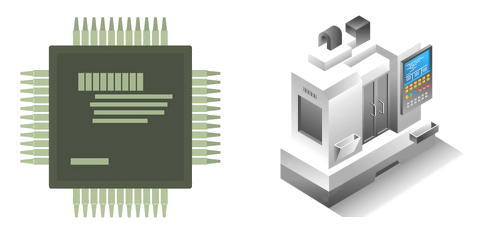 IT-Times
IT-Times
 Production Engineering/Manufacturing Technologies
Production Engineering/Manufacturing Technologies


 IT-Times
IT-Times
 Artificial Intelligence
Artificial Intelligence


 IT-Times
IT-Times
 CAD/CAE/CAM/EDA/PDM/PLM
CAD/CAE/CAM/EDA/PDM/PLM


 IT-Times
IT-Times
 CNC
CNC


 IT-Times
IT-Times
 CRM/EAM/ERP/SRM/SCM/HCM/QM/XM/WFM
CRM/EAM/ERP/SRM/SCM/HCM/QM/XM/WFM


 IT-Times
IT-Times
 Industrial Robot
Industrial Robot


 IT-Times
IT-Times
 PLC/DCS/FCS/SCADA/MES
PLC/DCS/FCS/SCADA/MES
 Jiangsu Sheng-JS
Jiangsu Sheng-JS
 Jilin Sheng-JL
Jilin Sheng-JL
 Liaoning Sheng-LN
Liaoning Sheng-LN
 Shandong Sheng-SD
Shandong Sheng-SD
 Sichuan Sheng-SC
Sichuan Sheng-SC
 Zhejiang Sheng-ZJ
Zhejiang Sheng-ZJ
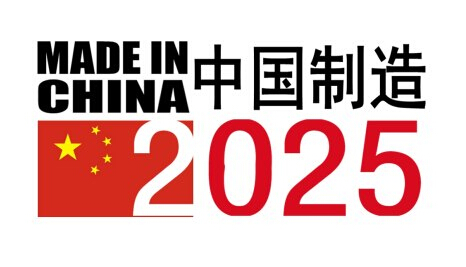
Neue Informationstechnologien/新一代信息技术产业
集成电路及专用装备。着力提升集成电路设计水平,不断丰富知识产权(IP)核和设计工具,突破关系国家信息与网络安全及电子整机产业发展的核心通用芯片,提升国产芯片的应用适配能力。掌握高密度封装及三维(3D)微组装技术,提升封装产业和测试的自主发展能力。形成关键制造装备供货能力。
信息通信设备。掌握新型计算、高速互联、先进存储、体系化安全保障等核心技术,全面突破第五代移动通信(5G)技术、核心路由交换技术、超高速大容量智能光传输技术、“未来网络”核心技术和体系架构,积极推动量子计算、神经网络等发展。研发高端服务器、大容量存储、新型路由交换、新型智能终端、新一代基站、网络安全等设备,推动核心信息通信设备体系化发展与规模化应用。
操作系统及工业软件。开发安全领域操作系统等工业基础软件。突破智能设计与仿真及其工具、制造物联与服务、工业大数据处理等高端工业软件核心技术,开发自主可控的高端工业平台软件和重点领域应用软件,建立完善工业软件集成标准与安全测评体系。推进自主工业软件体系化发展和产业化应用。
High-End numerische Maschinenwerkzeuge und Industrieroboter/高档数控机床和机器人
高档数控机床。开发一批精密、高速、高效、柔性数控机床与基础制造装备及集成制造系统。加快高档数控机床、增材制造等前沿技术和装备的研发。以提升可靠性、精度保持性为重点,开发高档数控系统、伺服电机、轴承、光栅等主要功能部件及关键应用软件,加快实现产业化。加强用户工艺验证能力建设。
机器人。围绕汽车、机械、电子、危险品制造、国防军工、化工、轻工等工业机器人、特种机器人,以及医疗健康、家庭服务、教育娱乐等服务机器人应用需求,积极研发新产品,促进机器人标准化、模块化发展,扩大市场应用。突破机器人本体、减速器、伺服电机、控制器、传感器与驱动器等关键零部件及系统集成设计制造等技术瓶颈。
Luft- und Raumfahrzeuge/航空航天装备
加快大型飞机研制,适时启动宽体客机研制,鼓励国际合作研制重型直升机;推进干支线飞机、直升机、无人机和通用飞机产业化。突破高推重比、先进涡桨(轴)发动机及大涵道比涡扇发动机技术,建立发动机自主发展工业体系。开发先进机载设备及系统,形成自主完整的航空产业链。
航天装备。发展新一代运载火箭、重型运载器,提升进入空间能力。加快推进国家民用空间基础设施建设,发展新型卫星等空间平台与有效载荷、空天地宽带互联网系统,形成长期持续稳定的卫星遥感、通信、导航等空间信息服务能力。推动载人航天、月球探测工程,适度发展深空探测。推进航天技术转化与空间技术应用。
Meerestechnik -Ausrüstung und High-End-Schiffe/海洋工程装备及高技术船舶
大力发展深海探测、资源开发利用、海上作业保障装备及其关键系统和专用设备。推动深海空间站、大型浮式结构物的开发和工程化。形成海洋工程装备综合试验、检测与鉴定能力,提高海洋开发利用水平。突破豪华邮轮设计建造技术,全面提升液化天然气船等高技术船舶国际竞争力,掌握重点配套设备集成化、智能化、模块化设计制造核心技术。
High-End Schienenverkehrstechnik/先进轨道交通装备
加快新材料、新技术和新工艺的应用,重点突破体系化安全保障、节能环保、数字化智能化网络化技术,研制先进可靠适用的产品和轻量化、模块化、谱系化产品。研发新一代绿色智能、高速重载轨道交通装备系统,围绕系统全寿命周期,向用户提供整体解决方案,建立世界领先的现代轨道交通产业体系。
Energiesparende Autos und neue Energie-Autos/节能与新能源汽车
继续支持电动汽车、燃料电池汽车发展,掌握汽车低碳化、信息化、智能化核心技术,提升动力电池、驱动电机、高效内燃机、先进变速器、轻量化材料、智能控制等核心技术的工程化和产业化能力,形成从关键零部件到整车的完整工业体系和创新体系,推动自主品牌节能与新能源汽车同国际先进水平接轨。
Elektrische Ausrüstung/电力装备
推动大型高效超净排放煤电机组产业化和示范应用,进一步提高超大容量水电机组、核电机组、重型燃气轮机制造水平。推进新能源和可再生能源装备、先进储能装置、智能电网用输变电及用户端设备发展。突破大功率电力电子器件、高温超导材料等关键元器件和材料的制造及应用技术,形成产业化能力。
Landwirtschaftsmaschinen/农机装备
重点发展粮、棉、油、糖等大宗粮食和战略性经济作物育、耕、种、管、收、运、贮等主要生产过程使用的先进农机装备,加快发展大型拖拉机及其复式作业机具、大型高效联合收割机等高端农业装备及关键核心零部件。提高农机装备信息收集、智能决策和精准作业能力,推进形成面向农业生产的信息化整体解决方案。
Neue Werkstoffe/新材料
以特种金属功能材料、高性能结构材料、功能性高分子材料、特种无机非金属材料和先进复合材料为发展重点,加快研发先进熔炼、凝固成型、气相沉积、型材加工、高效合成等新材料制备关键技术和装备,加强基础研究和体系建设,突破产业化制备瓶颈。积极发展军民共用特种新材料,加快技术双向转移转化,促进新材料产业军民融合发展。高度关注颠覆性新材料对传统材料的影响,做好超导材料、纳米材料、石墨烯、生物基材料等战略前沿材料提前布局和研制。加快基础材料升级换代。
Bio-Medizin und High-End-medizinische Geräte/生物医药及高性能医疗器械
发展针对重大疾病的化学药、中药、生物技术药物新产品,重点包括新机制和新靶点化学药、抗体药物、抗体偶联药物、全新结构蛋白及多肽药物、新型疫苗、临床优势突出的创新中药及个性化治疗药物。提高医疗器械的创新能力和产业化水平,重点发展影像设备、医用机器人等高性能诊疗设备,全降解血管支架等高值医用耗材,可穿戴、远程诊疗等移动医疗产品。实现生物3D打印、诱导多能干细胞等新技术的突破和应用。

 Beijing Shi-BJ
Beijing Shi-BJ
 China
China

 History
History
 M 1500 - 2000 AD
M 1500 - 2000 AD

 History
History

 History
History
 N 2000 - 2100 AD
N 2000 - 2100 AD

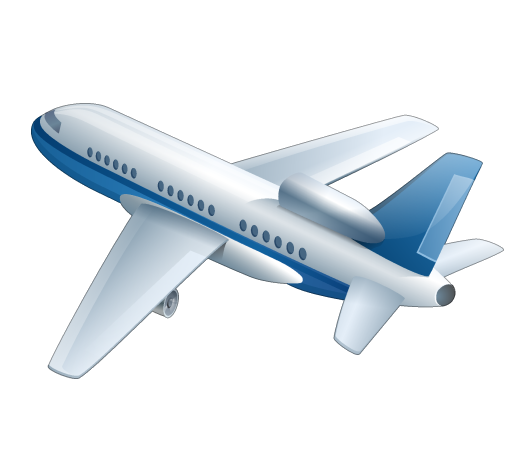
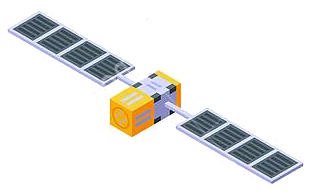
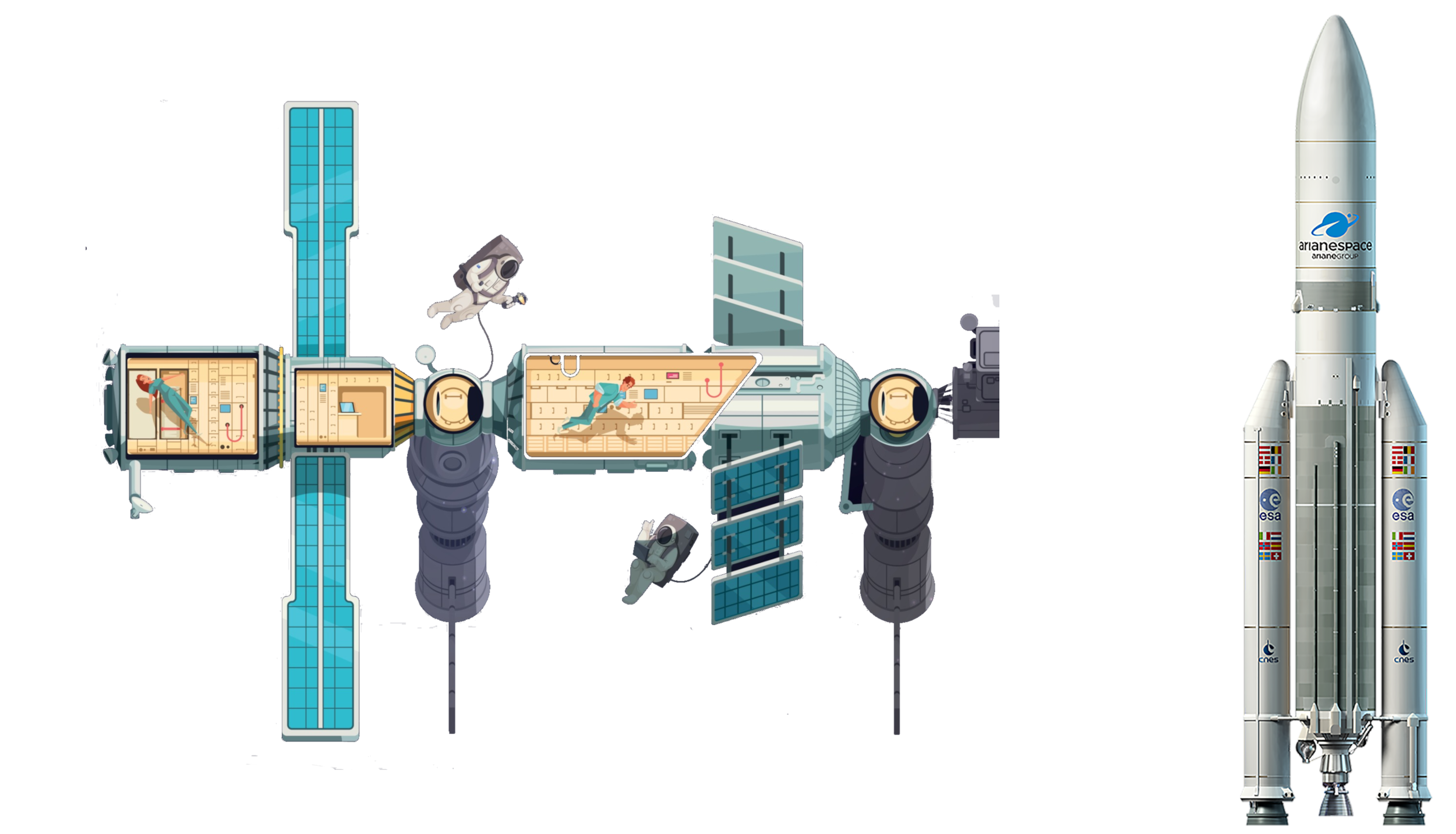 Aerospace
Aerospace
 Missions to Mars
Missions to Mars



 Aerospace
Aerospace
 *CNSA
*CNSA
 Ministerium für Informationsindustrie
Ministerium für Informationsindustrie


中国抗日战争,或称日本侵华战争、第二次中日战争[注 7],又称八年抗战或十四年抗战,是指1930年代至1945年中华民国与大日本帝国之间发生的战争。战场主要位于中国境内,同时也包括缅甸北部等邻接地区[13]。
Als Zweiten Japanisch-Chinesischen Krieg (bzw. Zweiten Sino-Japanischen Krieg)[1] bezeichnet man den umfassenden Krieg der Japaner in China, der am 7. Juli 1937 begann und bis zum 9. September 1945 dauerte. Nach dem Angriff der Japaner auf Pearl Harbor am 7. Dezember 1941, Kriegseintritt der USA, war er ein Schauplatz des Pazifikkrieges und damit Teil des Zweiten Weltkrieges.
v 



Tongmenghui (chin. 同盟會 / 同盟会, Tóngménghuì, W.-G. T'ung-meng Hui „Gesellschaft der (revolutionären) Allianz“) ist eine von Sun Yatsen 1905 in Tokio gegründete Gesellschaft. Sie ist ein Zusammenschluss aus mehreren kleinen revolutionären Gruppierungen, die davor autonom agierten und verstand sich zu Anfang noch als Geheimgesellschaft.(Quelle:Wikipedia)

中和殿是北京故宫外朝三大殿之一,属于中国传统宫殿建筑之精华。位于紫禁城太和殿、保和殿之间。是皇帝去太和殿大典之前休息的地方,并接受执事官员的朝拜的地方。凡遇皇帝亲祭,如祭天坛、地坛,皇帝于前一日在中和殿阅览祝文。祭先农坛举行亲耕仪式前,还要在此查验种子和农具。 中和殿始建于明永乐十八年(1420年),明初称“华盖殿”。嘉靖时遭遇火灾,重修后改称“中极殿”,现天花内构件上仍遗留有明代“中极殿”墨迹。清顺治元年(1644年),清皇室入主紫禁城,第二年改中极殿为中和殿。“中和”二字取自《礼记`中庸》:“中也者,天下之本也;和也者,天下之道也”之意。
Die Halle der zentralen Harmonie (chinesisch: 中和殿; pinyin: Zhōng Hé Diàn; mandschu: ᡩᡠᠯᡳᠮᠪᠠ ᡳᡥᡡᠸᠠᠯᡳᠶᠠᠮᠪᡠᡵᡝ ᡩᡝᠶᡝᠨ dulimba-i hūwaliyambure deyen) ist eine der drei Hallen des Äußeren Hofes der Verbotenen Stadt in Peking, China, zusammen mit der Halle der Höchsten Harmonie und der Halle der Bewahrung der Harmonie. Sie ist kleiner als die beiden anderen Hallen und hat eine quadratische Form. Sie diente dem Kaiser zur Vorbereitung und Erholung vor und während der Zeremonien.
Die Republik China (chinesisch 中華民國, Pinyin Zhōnghuá Mínguó, IPA (hochchinesisch) [ʈ͡ʂʊ́ŋxu̯ɑ̌ mǐnku̯ɔ̌], weithin bekannt als Taiwan[6][7]), in der Schweiz und in Österreich amtlich Taiwan (Chinesisches Taipei),[8][9] auch Taiwan (ROC)[10] bzw. Republik China auf Taiwan[7] genannt, ist ein demokratischer Inselstaat in Ostasien. Sein Territorium besteht aus der Hauptinsel Taiwan (99 %) und anderen kleineren Inseln.[7] Der Staat hatte im Jahr 2016 eine Bevölkerung von rund 23,5 Millionen Menschen.[11]
Die Republik China wurde nach der Xinhai-Revolution auf dem chinesischen Festland am 1. Januar 1912 in Nanking ausgerufen. Die Insel Taiwan, von 1895 bis 1945 unter Herrschaft des japanischen Kaiserreichs, fiel erst nach dem Zweiten Weltkrieg an die Republik China. 1949 – nach der Gründung der Volksrepublik China – zogen sich die Regierung, Eliten und Streitkräfte der Republik China auf die Insel Taiwan zurück. Dort etablierte die von Chiang Kai-Shek geführte Staatspartei Kuomintang unter Beibehaltung des Ausnahmezustands eine mehrere Jahrzehnte andauernde Einparteienherrschaft. Die zweite Hälfte des 20. Jahrhunderts war von hohem Wirtschaftswachstum gekennzeichnet, gegen Ende der 1980er Jahre ließ die Kuomintang eine schrittweise Demokratisierung zu. Heute ist die Republik China auf Taiwan ein technisch hochentwickelter, demokratisch verfasster Industriestaat.
Auch nach der Ausrufung der Volksrepublik China 1949 vertrat die Regierung der Republik China auf Taiwan China zunächst bei den Vereinten Nationen und war ständiges Mitglied des UN-Sicherheitsrats. Als Folge der Ein-China-Politik der Volksrepublik brachen aber immer mehr Staaten ihre diplomatischen Beziehungen zur Republik China ab, die 1971 auch ihre UN-Mitgliedschaft an die Volksrepublik abgeben musste. 1979 brachen schließlich auch die USA die diplomatischen Kontakte ab, nachdem sie offizielle Beziehungen zur Volksrepublik aufgenommen hatten (Taiwan Relations Act). Nur eine Minderheit der Staatengemeinschaft unterhält heute formal diplomatische Beziehungen mit der Regierung in Taipeh. Die völkerrechtliche Stellung der Republik China auf Taiwan ist bis heute umstritten und Gegenstand des Taiwan-Konflikts.
中华民国是位于东亚的民主共和国,自1912年成立以来至1971年退出联合国期间是中国的代表政权,其后则因主要剩余实际控制领土范围与政治现状而通称“台湾”,但因受到中华人民共和国在国际上的打压,而在部分国际组织参赛活动中被称作“中华台北”[14][15][16]。建政之初继承原清朝统治的中国领土[注 7],1945年第二次世界大战后从日本接收台湾。1949年因第二次国共内战失去大部分中国领土的治权,现今实际管辖的领土(即台湾地区)总面积36,197平方公里,包括台湾本岛及附属岛屿、澎湖群岛、金门群岛、马祖列岛、乌坵列岛与部分南海诸岛岛屿,首都为台北[17],最大城市为新北市。总人口约2,355万[4],主要由汉族与台湾原住民族组成,官方语言以汉语通用语为主,国家语言为[5] 台湾原住民族诸语、台湾客家语等台湾固有族群之自然语言以及台湾手语。
1911年10月10日辛亥革命爆发两个月后,中华民国于1912年1月1日宣告成立,同年2月12日,清宣统帝颁布退位诏书,中华民国正式继承统治中国。此后历经北洋政府、国民政府、行宪政府等政治体制更迭。1928年由中国国民党完成北伐后长期一党专政,但在第二次国共内战对中国共产党的战事接连失利,而在1949年底将政府迁往台湾,中国共产党则在同年10月1日建立新政权──中华人民共和国,统治中国大陆,开启两岸分治的格局;虽然中华民国政府仅有效统治台湾及部分中国东南沿岸岛屿,但其后仍长期继续为世界多数国家认定的中国代表政权,亦是联合国会员国兼安全理事会常任理事国[18][19],直到1971年所持之联合国会员资格被中华人民共和国取代后,才逐渐失去广泛外交承认[19]。其后在国际场合上若得以参与,则使用“中华台北”等作代称或仅能派领袖代表。
中华民国在政府退守台湾后积极发展经济,成为亚洲四小龙之一,至今名列世界第22大经济体[20],迈入世界先进国家之林。1980年代末则开始推动民主化,从中国国民党一党专政的威权主义国家,演变成多党制和直接民权的民主国家[21][22],政治与社会发展也趋向“台湾化”。现今国民享有新闻自由、思想自由、政治自由、婚姻自由[注 8]、经济自由[23][24]、集会结社自由以及发达的医疗保健[25]、公共教育。具有发达的科技和人文[10][26]。
现今中华民国的政治地位和存否存有争议,属于不被国际普遍承认的国家,主因来自于中华人民共和国政府在外交上的打压,并声明“一个中国原则”。中华民国政府迁往台湾后,初期依照《中华民国宪法》主张己身为代表中国之唯一合法政府,并宣称要“反攻大陆”[27][28];但该主张在1990年代后逐渐不再被提起[29][30],政府对此的立场常取决于执政党之意向[30]。另一方面,中华人民共和国政府则声明已取代中华民国所拥有的中国主权,进而不承认现今中华民国的合法性和存在[31],并透过立法宣示当台湾正式宣告独立或局势不利其将来统一台湾[注 9]、或两岸无可能依其标准“和平统一时,有可能动用武力拿下台湾[34][35]。此外,随着所主要管制地区——台湾——的主体意识与独立运动兴起,亦有论点主张中华民国流亡台湾或殖民台湾、以及台湾地位未定论[36]。
(编者按:历史遗留的问题需要历史地去看。摘编内容仅供参考,不代表编者与任何一方的政治意图)
中華民国(ちゅうかみんこく)は、東アジアに位置する民主共和制国家である。
アジアで2番目の共和国[5]として1912年に大陸地区で成立したが、国共内戦で中華人民共和国に大陸地区から放逐された1950年[6]以降は台湾省の全域[7]と福建省の極一部の島嶼(台湾地区)のみを実効支配する海洋国家となった。台湾地区は、日本やフィリピン、中華人民共和国などと領海を接する。
議会制民主主義・資本主義体制国であり、1971年までは国際連合安全保障理事会常任理事国として国際社会に大きな影響を与えていた。しかし国連の代表権問題や一つの中国政策により、中華人民共和国が中華民国を国家承認しないように要求しているため、2018年10月1日現在では中華民国を正式に国家として承認している国は17ヶ国に留まる。上記の経緯があるため以前の国交を結んでいた国々を中心に、日本を含めて多くの国々と活発な経済的文化的な交流が行われている。台湾島及びその周辺島嶼群を含む地域名である台湾(たいわん)と表記されるのが一般的である。
Taiwan (/taɪˈwɑːn/ (![]() listen), UK also /-ˈwɒn, -ˈwæn/), officially the Republic of China (ROC), is a state in East Asia.[18][19][20] Nearby states include the People's Republic of China (PRC) to the west, Japan to the northeast, and the Philippines to the south. It is the most populous state and largest economy that is not a member of the United Nations.
listen), UK also /-ˈwɒn, -ˈwæn/), officially the Republic of China (ROC), is a state in East Asia.[18][19][20] Nearby states include the People's Republic of China (PRC) to the west, Japan to the northeast, and the Philippines to the south. It is the most populous state and largest economy that is not a member of the United Nations.
The island of Taiwan, formerly known as Formosa, was inhabited by aborigines before the 17th century, when Dutch and Spanish colonies opened the island to mass Han immigration. After a brief rule by the Kingdom of Tungning, the island was annexed in 1683 by the Qing dynasty, the last dynasty of China. The Qing ceded Taiwan to Japan in 1895 after the Sino-Japanese War. While Taiwan was under Japanese rule, the Republic of China (ROC) was established on the mainland in 1912 after the fall of the Qing dynasty. Following the Japanese surrender to the Allies in 1945, the ROC took control of Taiwan. However, the resumption of the Chinese Civil War led to the ROC's loss of the mainland to the Communists, and the flight of the ROC government to Taiwan in 1949. Although the ROC continued to claim to be the legitimate government of China, its effective jurisdiction had, since the loss of Hainan in 1950, been limited to Taiwan and several small islands, with the main island making up 99% of its de facto territory. As a founding member of the United Nations, the ROC represented China at the UN until 1971, when it lost its seat to the PRC.
In the early 1960s, Taiwan entered a period of rapid economic growth, forming a stable industrial economy. In the 1980s and early 1990s, it changed from a one-party military dictatorship dominated by the Kuomintang to a multi-party democracy with a semi-presidential system. Taiwan is the 22nd-largest economy in the world, and its high-tech industry plays a key role in the global economy. It is ranked highly in terms of freedom of the press, healthcare,[21] public education, economic freedom, and human development.[c][22] The country benefits from a highly skilled workforce and is among the most highly educated countries in the world with one of the highest percentages of its citizens holding a tertiary education degree.[23][24]
The PRC has consistently claimed sovereignty over Taiwan and asserted the ROC is no longer in legitimate existence. Under its One-China policy the PRC refuses diplomatic relations with any country that recognizes the ROC. Today,[when?] 17 countries maintain official ties with the ROC but many other states maintain unofficial ties through representative offices and institutions that function as de facto embassies and consulates. Although Taiwan is fully self-governing, most international organizations in which the PRC participates either refuse to grant membership to Taiwan or allow it to participate only as a non-state actor. Internally, the major division in politics is between the aspirations of eventual Chinese unification or Taiwanese independence, though both sides have moderated their positions to broaden their appeal. The PRC has threatened the use of military force in response to any formal declaration of independence by Taiwan or if PRC leaders decide that peaceful unification is no longer possible.[25] The PRC and ROC standoff dates from the Chinese Civil War and has extended through the first, second and third Taiwan Strait crises to the present day.
Taïwan, officiellement la république de Chine (chinois simplifié : 中华民国 ; chinois traditionnel : 中華民國 ; pinyin : ), est un territoire au statut contesté d'Asie de l'Est (voir statut de Taïwan), considéré comme une province chinoise par l'Union européenne et l'ONU, dont le territoire s'étend actuellement sur l'île de Taïwan, ainsi que d'autres îles avoisinantes, celles de la province du Fujian et les îles Pescadores.
Taïwan fut officiellement gouverné par la Chine de 1683 à 1895, puis cédé au Japon, par le traité de Shimonoseki (1895), à la suite de la première guerre sino-japonaise. Ce dernier entreprend le développement de Taïwan, la dotant d'infrastructures importantes. En 1945, à la suite de la défaite japonaise à l'issue de la Seconde Guerre mondiale, la république de Chine recouvre Taïwan. En 1949, le gouvernement de la République contrôlé par le Kuomintang s'y installe, après avoir perdu la guerre civile contre les communistes. Cette installation est accompagnée d'un transfert massif de population. À partir de 1950, après avoir perdu Hainan, la république de Chine ne contrôle plus que l'île de Taïwan et quelques autres territoires insulaires plus petits.
La république de Chine occupait le siège de la Chine à l'ONU jusqu'en 1971, date à laquelle la république populaire de Chine la remplaça. La république de Chine et la république populaire de Chine revendiquent chacune la pleine et légitime souveraineté sur la totalité du territoire chinois (Chine continentale et île de Taïwan). Aujourd'hui, la république de Chine (Taïwan) revendique toujours officiellement la souveraineté sur le continent[réf. nécessaire], même si ses revendications ne sont pas activement poursuivies, dans un effort d'améliorer les relations diplomatiques entre la république populaire de Chine et la république de Chine. Dans les faits, Taïwan a une indépendance administrative et politique par rapport au continent, mais son indépendance n'a jamais été proclamée ni par le gouvernement de l'île, ni par celui du continent. Elle est donc considérée par l'ONU comme une province de la république populaire de Chine, et par le gouvernement de Taïwan comme une province de la république de Chine, selon les dispositions de sa Constitution d'avant 1949.Une réforme agraire réussie puis un développement économique rapide et soutenu pendant la deuxième moitié du XXe siècle ont transformé Taïwan, un des quatre dragons asiatiques, en un pays industrialisé développé jouissant d'un niveau de vie équivalent à celui du Japon ou de l'Union européenne. Cette ascension économique est souvent appelée le miracle taïwanais. Ses industries de haute technicité jouent un rôle essentiel dans l'économie mondiale. Les entreprises taïwanaises fournissent une bonne partie des produits électroniques du monde, mais la grande majorité de ceux-ci sont fabriqués dans leurs usines en république populaire de Chine et dans d'autres pays d'Asie du Sud-Est. Ce développement économique s'est réalisé en parallèle à une démocratisation de la vie politique locale, après plus de quarante années passées sous un régime autoritaire.
Lee Teng-hui est le premier président élu au suffrage universel direct en 1996. Son successeur est Chen Shui-bian (Parti démocrate progressiste) qui remporte les élections présidentielles de 2000 et de 2004. Ma Ying-jeou (Kuomintang) est quant à lui élu président en 2008 et réélu en 2012.
L'indépendantiste Tsai Ing-wen remporte l’élection présidentielle de janvier 2016 avec 56 % des voix contre 31 % pour Eric Chu, le candidat du parti jusqu’ici au pouvoir, le Kuomintang (KMT). Tsai Ing-wen devient ainsi la première femme à la tête de l'État. Le Minjindang (Parti démocrate progressiste) dont elle est issue remporte de son côté 68 des 113 sièges du Parlement, lui offrant ainsi une majorité parlementaire solide.
La Repubblica di Cina (RDC) (cinese tradizionale: 中華民國; cinese semplificato: 中华民国; Wade-Giles: Chung-hua Min-kuo: Tongyong Pinyin: ZhōngHuá MínGuó; Hanyu Pinyin: Zhōnghuá Mínguó; Gwoyeu Romatzyh: Jonghwa Mingwo), comunemente nota come Taiwan (/taiˈwan/[6]) o Formosa (/forˈmosa/[7]), è uno Stato de facto costituito dal gruppo di isole di Formosa, Pescadores, Quemoy e Matsu, ma che nella sua costituzione rivendica anche la Cina continentale e la Mongolia Esterna.
Non riconosciuto né dalla Cina (Repubblica Popolare Cinese, RPC) né dagli altri membri permanenti del Consiglio di sicurezza dell'ONU[8] (Stati Uniti, Russia, Regno Unito e Francia), nonché dal Canada e dagli altri paesi dell'Unione europea, l'isola di Taiwan (台湾岛) intrattiene tuttavia con essi rapporti di collaborazione e di commercio (solitamente con un ufficio di rappresentanza facente funzioni di ambasciata, a nome Taiwan o Taipei); al novembre 2013 è riconosciuta da 20 stati in tutto il mondo, tra cui la Città del Vaticano.
Comunemente ci si riferisce a Taiwan come "Repubblica di Cina", laddove invece "Cina" (中国) da solo è usato per indicare la Repubblica Popolare Cinese (中华人民共和国) che controlla la Cina continentale (中国大陆), l'area economica speciale di Hong Kong (香港特别行政区) e Macao (澳门特别行政区). La capitale ufficiale è Nanchino (南京), che si trova però nel continente; la capitale provvisoria è quindi Taipei (台北). Nelle organizzazioni internazionali, come quelle sportive, di cui la RDC è parte ci si riferisce a essa come Cina Taipei o semplicemente Taipei, a causa dei problemi diplomatici con la RPC che vi si riferisce come "provincia separatista di Taiwan".
La República de China (chino tradicional: 中華民國, pinyin: Zhōnghuá Mínguó, Wade-Giles: Chung-hua Min-kuo), más conocida como Taiwán (chino tradicional: 臺灣, pinyin: Táiwān), es un Estado con reconocimiento limitado4 situado en el extremo oriente de Asia.
El régimen de la República de China sucedió a la última dinastía imperial, la Qing, como sistema político en China en el año 1912. Tras el final de la Guerra Civil China en 1949, el bando vencedor (el partido comunista de Mao Zedong) proclamó la República Popular China en Pekín y el derrotado régimen de la República de China, dominado por el Partido Nacionalista Chino o Kuomintang de Chiang Kai-shek encontró refugio en la isla de Taiwán, la única parte del territorio chino que no llegaría a caer bajo el control del nuevo régimen chino y donde se ha mantenido la República de China hasta la actualidad.
Desde 1949, la República de China solamente administra diversas islas, siendo la principal la isla de Taiwán, junto a varios archipiélagos pequeños cercanos como las islas Pescadores, Kinmen (o Quemoy), Matsu, Pratas y el atolón de Taiping.
Después de 1949, el régimen de la República de China continuó reclamando su condición de Gobierno legítimo de toda China, conservando el reconocimiento diplomático como tal de un gran número de países hasta los años 1970, cuando la mayor parte del mundo, incluidas las Naciones Unidas y casi todos sus países miembros, pasaron a reconocer a la República Popular. Debido a este enfrentamiento ideológico entre los dos regímenes chinos, durante la época de la Guerra Fría se utilizaban con frecuencia las denominaciones «China Nacionalista» para la República de China y «China Popular» para la República Popular China, respectivamente. La realidad territorial actual ha hecho que en las últimas décadas estos nombres hayan caído en desuso, y por lo tanto la República de China es denominada habitualmente como Taiwán, mientras que el nombre de «China» se aplica por lo general a la República Popular China.
Кита́йская Респу́блика (кит. трад. 中華民國, пиньинь: Zhōnghuá Mínguó, палл.: Чжунхуа Миньго; часто используется название Тайва́нь по наз
 Atomic bomb
Atomic bomb
 BRICS summit
BRICS summit
 China
China

 History
History
 M 1500 - 2000 AD
M 1500 - 2000 AD

 History
History

 History
History

 History
History
 N 2000 - 2100 AD
N 2000 - 2100 AD

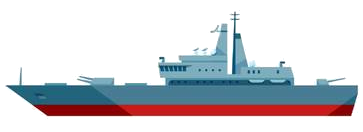
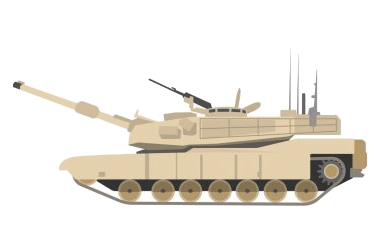
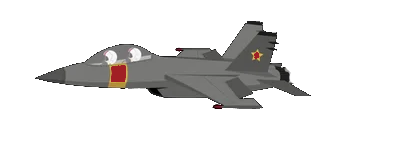
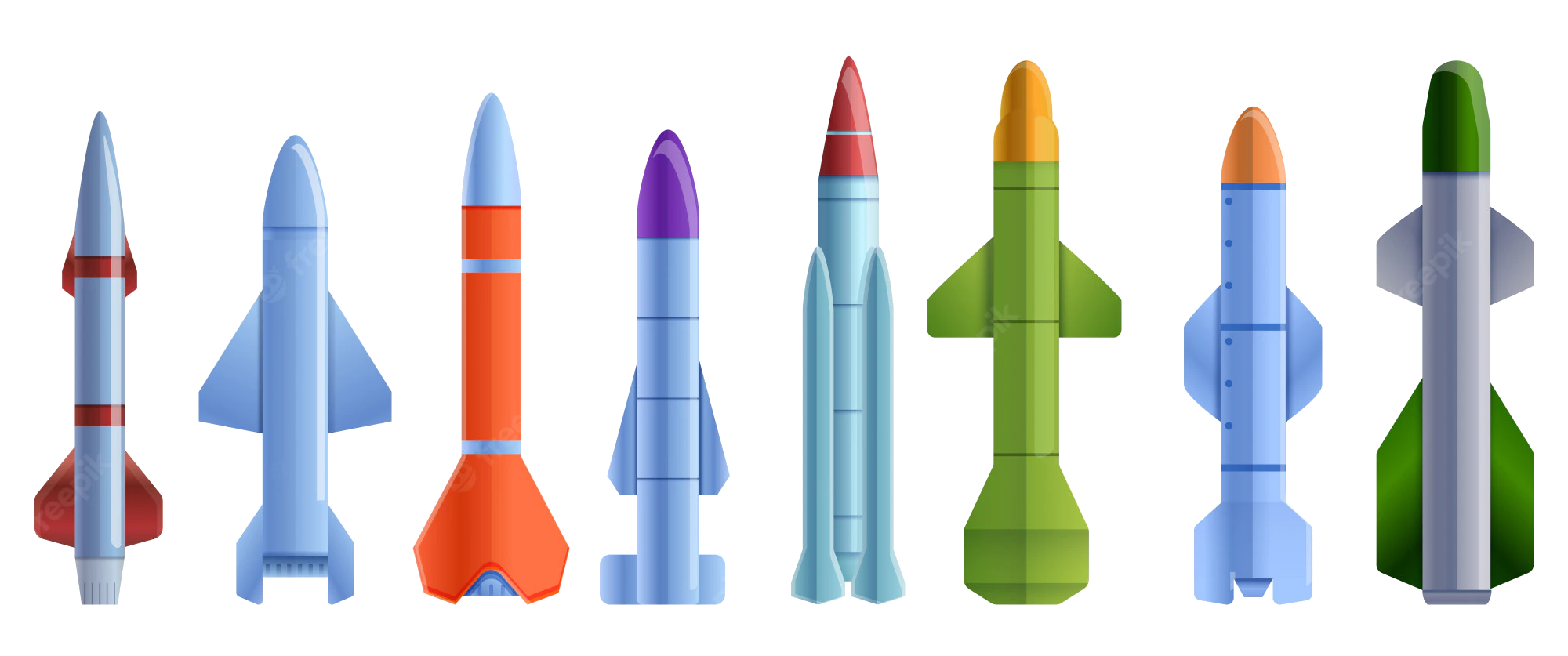 Military, defense and equipment
Military, defense and equipment
 Nuclear Weapon
Nuclear Weapon

 Party and government
Party and government
 Group of the twenty most important industrial and emerging countries
Group of the twenty most important industrial and emerging countries

 Party and government
Party and government
 BRICS
BRICS
 Silk road
Silk road
 Shanghai Cooperation Organization
Shanghai Cooperation Organization

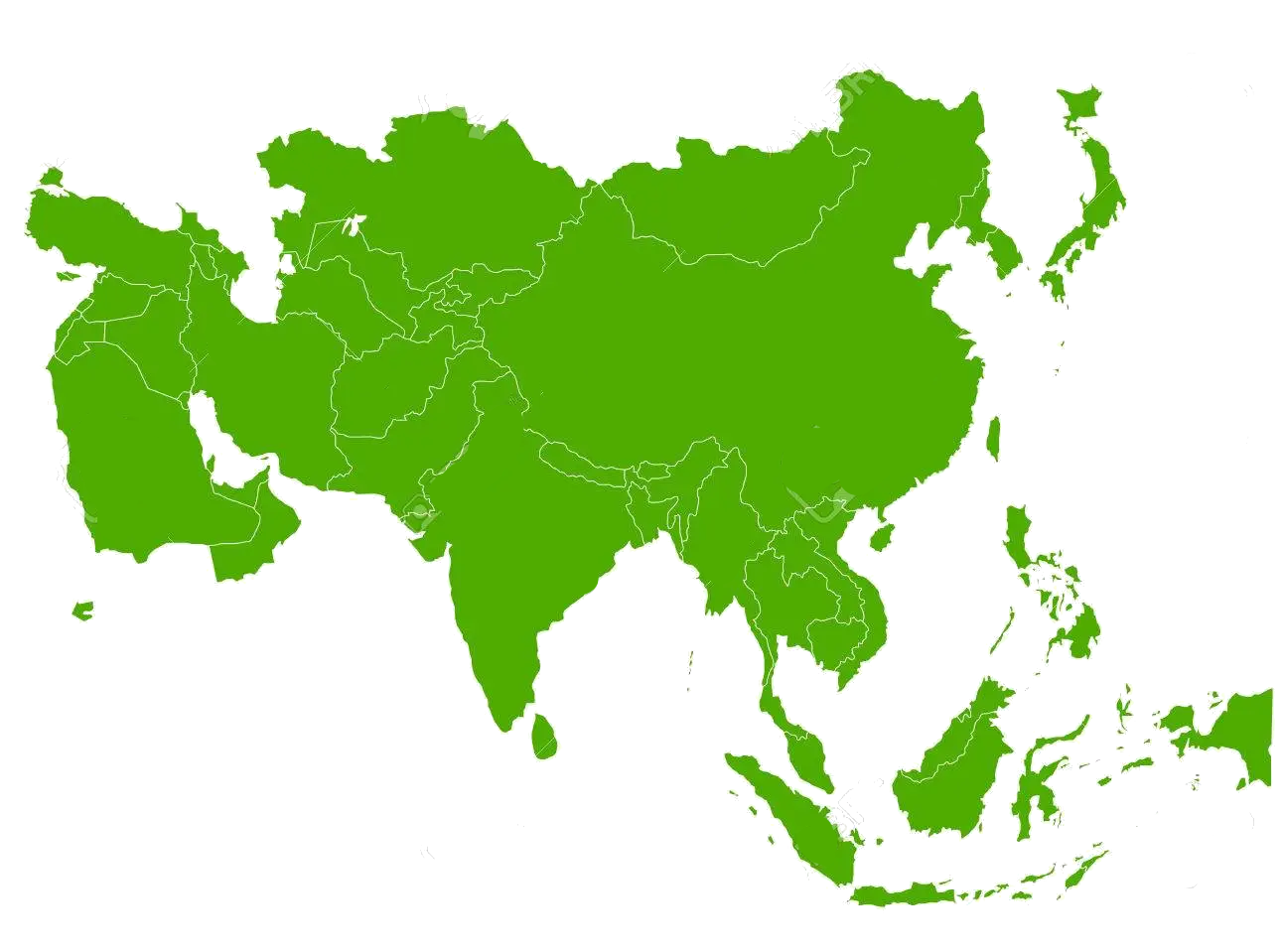 States of Asia
States of Asia

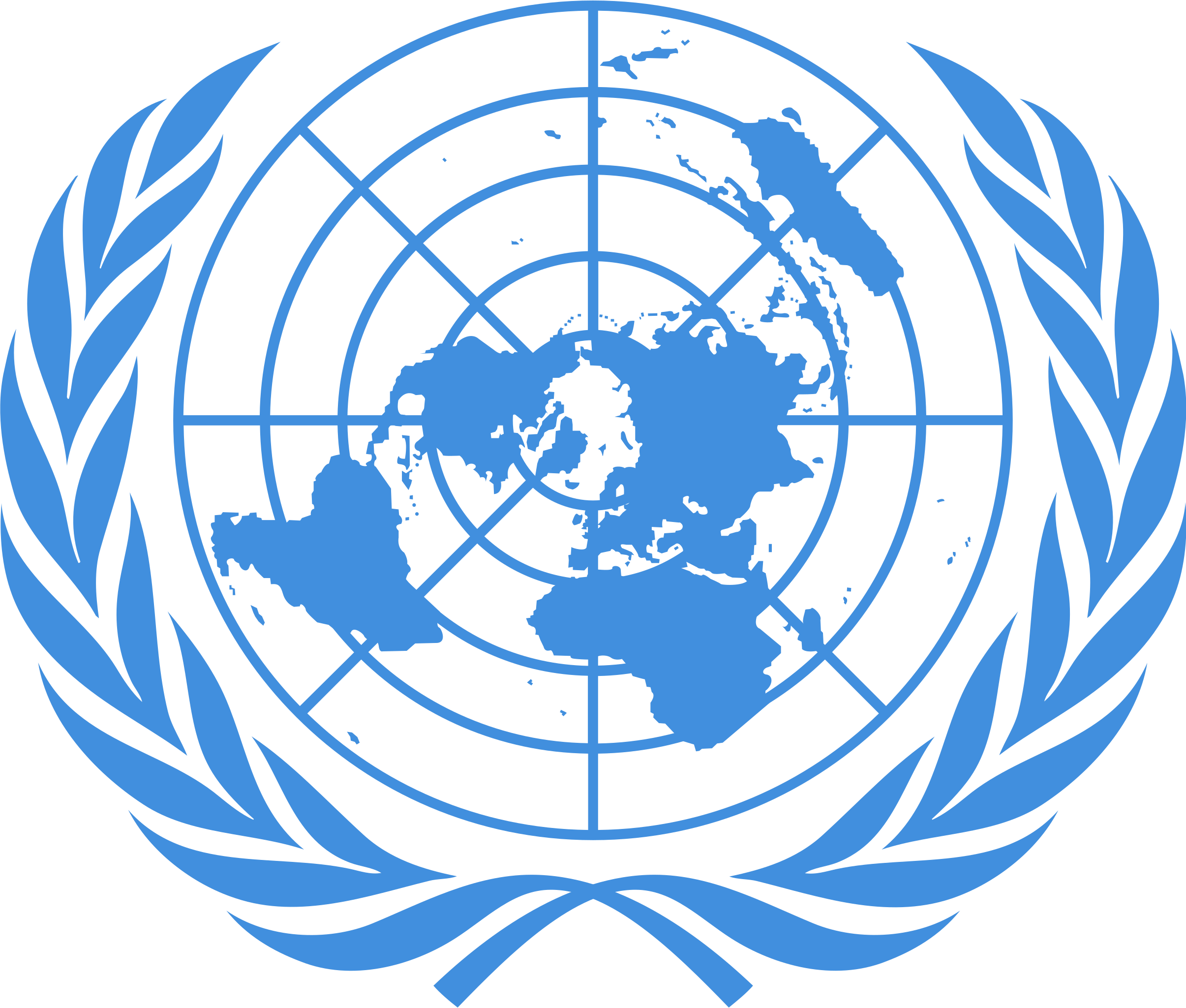 United Nations
United Nations
 United Nations Security Council
United Nations Security Council
 Hydrogen bomb
Hydrogen bomb

Die Volksrepublik China (chinesisch 中华人民共和国, Pinyin Zhōnghuá Rénmín Gònghéguó ![]() [tʂʊŋ˥xua˧˥ʐɛn˧˥mɪn˧˥kʊŋ˥˩xə˧˥kuɔ˧˥]), allgemein als China bezeichnet, ist ein am 1. Oktober 1949 gegründeter sozialistischer Staat in Ostasien. Mit rund 1,4 Milliarden Einwohnern stellt China das bevölkerungsreichste und gemessen an seiner Gesamtfläche das viertgrößte Land der Erde dar.[7]
[tʂʊŋ˥xua˧˥ʐɛn˧˥mɪn˧˥kʊŋ˥˩xə˧˥kuɔ˧˥]), allgemein als China bezeichnet, ist ein am 1. Oktober 1949 gegründeter sozialistischer Staat in Ostasien. Mit rund 1,4 Milliarden Einwohnern stellt China das bevölkerungsreichste und gemessen an seiner Gesamtfläche das viertgrößte Land der Erde dar.[7]
Gemäß ihrer Verfassung steht die Volksrepublik China „unter der demokratischen Diktatur des Volkes“, wird jedoch seit 1949 autoritär von der Kommunistischen Partei Chinas (KPCh) regiert. Wirtschaftlich weist China seit vielen Jahren eine hohe Dynamik auf. Auf Grundlage ihrer Reform- und Öffnungspolitik entwickelte sich China beginnend ab 1978 zu einer wirtschaftlichen und technologischen Großmacht.[8] Von der Weltbank wird das Land seit 2016 zu den Staaten mit einem Einkommensniveau im oberen Mittelfeld gerechnet. Seit 2010 ist China der Staat mit der umfangreichsten Warenausfuhr und gemessen an der Kaufkraftparität seit 2016 die größte Volkswirtschaft der Welt. Das jährliche Wirtschaftswachstum lag zwischen 2010 und 2017 im Durchschnitt bei 6,7 Prozent.[9]
Die Volksrepublik China zählt zu den offiziellen Atommächten, ist ständiges Mitglied des Weltsicherheitsrates sowie unter anderem Mitglied der Welthandelsorganisation, Weltbank, APEC, ASEAN, BRICS, UNESCO, Interpol, G20.
中华人民共和国,通称中国[13],是位于东亚的社会主义国家,首都位于北京[14]。中国领土陆地面积约960万平方千米,是世界上纯陆地[注 13]面积第二大、陆地[注 14]面积第三大、总面积第三大或第四大的国家[注 15][15],其分为23个省份[注 16]、5个自治区、4个直辖市和2个特别行政区。被视为亚洲地区重要地域大国,也被视为潜在超级大国[16][17][18]。是世界上人口最多的国家,约有13.9亿人[8],同时也是一个多民族国家,共有已确认的民族56个,其中汉族人口占91.51%[19]。以普通话和规范汉字为国家通用语言文字,少数民族地区可使用自己民族的语言文字。
中国地势西高东低而呈现三级阶梯分布,大部分地区属于温带、副热带季风气候,地理景致与气候型态丰富多样,有冰川、丹霞、黄土、沙漠、喀斯特等多种地貌[20],北方有干草原和荒漠,南方有热带雨林,西部和西南边境则有天山山脉、帕米尔高原、喀喇昆仑山脉和喜马拉雅山脉。东临太平洋,领海由渤海(内海)以及黄海、东海、南海三大边海组成[21],水域面积约470万平方千米,分布有大小岛屿7600个[22]。
科技方面,中国在航天航空、高速铁路、新能源、核技术、超级计算机、量子网络等领域有较强实力,研发经费则位居世界第二[23]。国防预算为世界第二高,拥有世界规模最大的常备部队及三位一体的核打击能力[24][25]。自1986年实行九年义务教育制度,就读公立学校的学生由政府提供其间学费。1978年改革开放后,中国成为经济增长最快的经济体之一[26][27]。当前,中国对外贸易额世界第一,是世界上最大的商品出口国及第二大的进口国,依国内生产总值按购买力平价位列世界第一、而国际汇率则排名世界第二[28]。2017年,中国人均国内生产总值依购买力平价为18,119美元,列全球第76位;依国际汇率则为8,643美元,列全球第72位,均尚低于世界水平[10]。改革开放以来,尽管贫困问题得到极大改善,但收入差距较大,且区域间发展不均——东部沿海地区的经济较中西部及东北地区发达——的问题仍极需解决[29][30]。
1949年中国共产党在内战中取得优势,终结了中国国民党在中国大陆的统治,于同年10月1日建立了中华人民共和国中央人民政府,并与退守台湾地区的中华民国政府形成两岸分治的政治格局。遵循和平共处五项原则的外交政策,在1971年取得在联合国的中国代表权后,成为联合国安全理事会常任理事国并加入了许多国际组织。
中華人民共和国(ちゅうかじんみんきょうわこく、簡体字: 中华人民共和国、繁体字: 中華人民共和國、拼音: 、英語: People's Republic of China, PRC)、通称中国(ちゅうごく、拼音: 、英語: China)は、東アジアに位置する主権国家。首都・北京市を政庁所在地とし、13億8千万人以上の人口で世界一人口が多い国でもある。
中華人民共和国憲法第一条で社会主義国家であることを明言しており、政治は中国共産党が指導的地位を有するヘゲモニー政党制を採用している[4]。
中華人民共和国は、中華民国統治下の中国で1921年に結党された中国共産党が、ソビエト連邦の支援を受けながら国共合作・抗日戦争(八路軍・新四軍)・国共内戦を経て国民政府を台湾島へ放逐[5]し、1949年10月1日に北京市で建国式典(中華人民共和国開国大典)を開催したことで成立した。
同国は国共内戦の延長で1954年に「台湾解放宣言」[6]を出し、第一次台湾海峡危機(1954年~1955年)と金門砲戦(1958年~1979年)を起こしたが武力による台湾占領には至らなかった。同国は2010年代に入ると一つの中国による台湾問題の解決を「(自国の)核心的利益の一つ」と規定するようになり、基本的には九二共識の合意に基づいた平和的な中国統一を目指しているが、一方で人民解放軍の武力による台湾制圧の可能性も指摘されている[7]。
計測方法によるが、同国は陸地面積では世界第2位[8]、総面積では世界第3位又は第4位である。同国の地形は、乾燥した北の森林ステップ、ゴビ砂漠、タクラマカン砂漠から、多湿な南の亜熱帯の森林まで広大かつ多様である。ヒマラヤ山脈、カラコルム山脈、パミール高原、天山山脈により、同国は南及び中央アジアから切り離されている。長さ世界第3位の長江及び同世界第6位の黄河は、チベット高原から人口密度の高い東の沿岸地域に流れ、古代には黄河文明や長江文明を興してきた。同国の太平洋に沿った海岸線は14,500kmの長さで、渤海、黄海、東シナ海、南シナ海に囲まれている。同国の国土は、22省級行政区、5自治区、北京市・天津市・上海市・重慶市の4直轄市、大部分が自治的な香港・マカオの2特別行政区によって構成されている。
中国は、繁栄と衰退の繰り返しだと考えられる過去2000年間の大部分で世界最大かつ最も複雑な経済を有した[9][10]。1978年における改革開放の導入以来、外資流入の勢いが増してゆき、産業構造が政策から転換して、中国は世界で最も成長率が高い主要経済大国の1つになった(#経済)。ソ連の純粋な社会主義体制と距離をとり、「経済面は有限な資本主義、政治面は一党独裁を守る」のような国家形態に変更したのである(中国特色社会主義)。
2016年時点で、同国は名目GDP及び貿易輸入額のいずれにおいても世界第2位であり(2014年には国際通貨基金・世界銀行・CIAワールドファクトブックによると購買力平価は世界最大のGDPとなった[11][12][13])、購買力平価GDPと貿易輸出額は世界一位である[14]。同国は核保有国に認められ、世界第2位の防衛予算で世界最大の常備軍を有する。中華人民共和国は1971年以来国際連合加盟国であり、中華民国の後任として安全保障理事会常任理事国である。中国は多数の公式及び非公式の多国間機構加盟国であり、WTO、APEC、BRICs、上海協力機構、BCIM、G20がこれに該当する。中国はアジアの地域大国であり、多数の解説者により潜在的な超大国として特徴付けられてきた[15][16]。なお2017年7月現在、中華人民共和国の世界遺産はイタリアについで52件ある。国内には文化遺産が22件、自然遺産が4件、複合遺産が4件存在する。
China, officially the People's Republic of China (PRC), is a country in East Asia and the world's most populous country, with a population of around 1.404 billion.[13] Covering approximately 9,600,000 square kilometers (3,700,000 sq mi), it is the third- or fourth-largest country by total area.[k][19] Governed by the Communist Party of China, the state exercises jurisdiction over 22 provinces, five autonomous regions, four direct-controlled municipalities (Beijing, Tianjin, Shanghai, and Chongqing), and the special administrative regions of Hong Kong and Macau.
China emerged as one of the world's earliest civilizations, in the fertile basin of the Yellow River in the North China Plain. For millennia, China's political system was based on hereditary monarchies, or dynasties, beginning with the semi-legendary Xia dynasty in 21st century BCE.[20] Since then, China has expanded, fractured, and re-unified numerous times. In the 3rd century BCE, the Qin reunited core China and established the first Chinese empire. The succeeding Han dynasty, which ruled from 206 BC until 220 AD, saw some of the most advanced technology at that time, including papermaking and the compass,[21] along with agricultural and medical improvements. The invention of gunpowder and movable type in the Tang dynasty (618–907) and Northern Song (960–1127) completed the Four Great Inventions. Tang culture spread widely in Asia, as the new Silk Route brought traders to as far as Mesopotamia and Horn of Africa.[22] Dynastic rule ended in 1912 with the Xinhai Revolution, when a republic replaced the Qing dynasty. The Chinese Civil War resulted in a division of territory in 1949, when the Communist Party of China established the People's Republic of China, a unitary one-party sovereign state on Mainland China, while the Kuomintang-led government retreated to the island of Taiwan. The political status of Taiwan remains disputed.
Since the introduction of economic reforms in 1978, China's economy has been one of the world's fastest-growing with annual growth rates consistently above 6 percent.[23] As of 2016, it is the world's second-largest economy by nominal GDP and largest by purchasing power parity (PPP).[24] China is also the world's largest exporter and second-largest importer of goods.[25] China is a recognized nuclear weapons state and has the world's largest standing army and second-largest defense budget.[26][27] The PRC is a permanent member of the United Nations Security Council as it replaced the ROC in 1971, as well as an active global partner of ASEAN Plus mechanism. China is also a leading member of numerous formal and informal multilateral organizations, including the Shanghai Cooperation Organization (SCO), WTO, APEC, BRICS, the BCIM, and the G20. In recent times, China has been widely characterized as a global superpower.[28][29][30]
La Chined, en forme longue la république populaire de Chine (ou République populaire de Chinee, RPC, chinois simplifié : 中华人民共和国 ; chinois traditionnel : 中華人民共和國 ; pinyin : , prononcé [tʂʊŋ˥xua˧˥ɻən˧˥mɪn˧˥kʊŋ˥˩xə˧˥kuɔ˧˥] Écouter), parfois appelée Chine populaire, est un pays d'Asie de l'Est. Avec près d'1,4 milliard d'habitants, soit environ un sixième de la population mondiale, elle est le pays le plus peuplé du monde6. Elle compte huit agglomérations de plus de dix millions d'habitants, dont la capitale Pékin,

 *Chinesisches Ritual
*Chinesisches Ritual
 Ding
Ding
 Hebei Sheng-HE
Hebei Sheng-HE

 Art
Art
 *Chinese bronze art
*Chinese bronze art

 Art
Art
 CE - Chinese Art 771 BC - 221 BC
CE - Chinese Art 771 BC - 221 BC
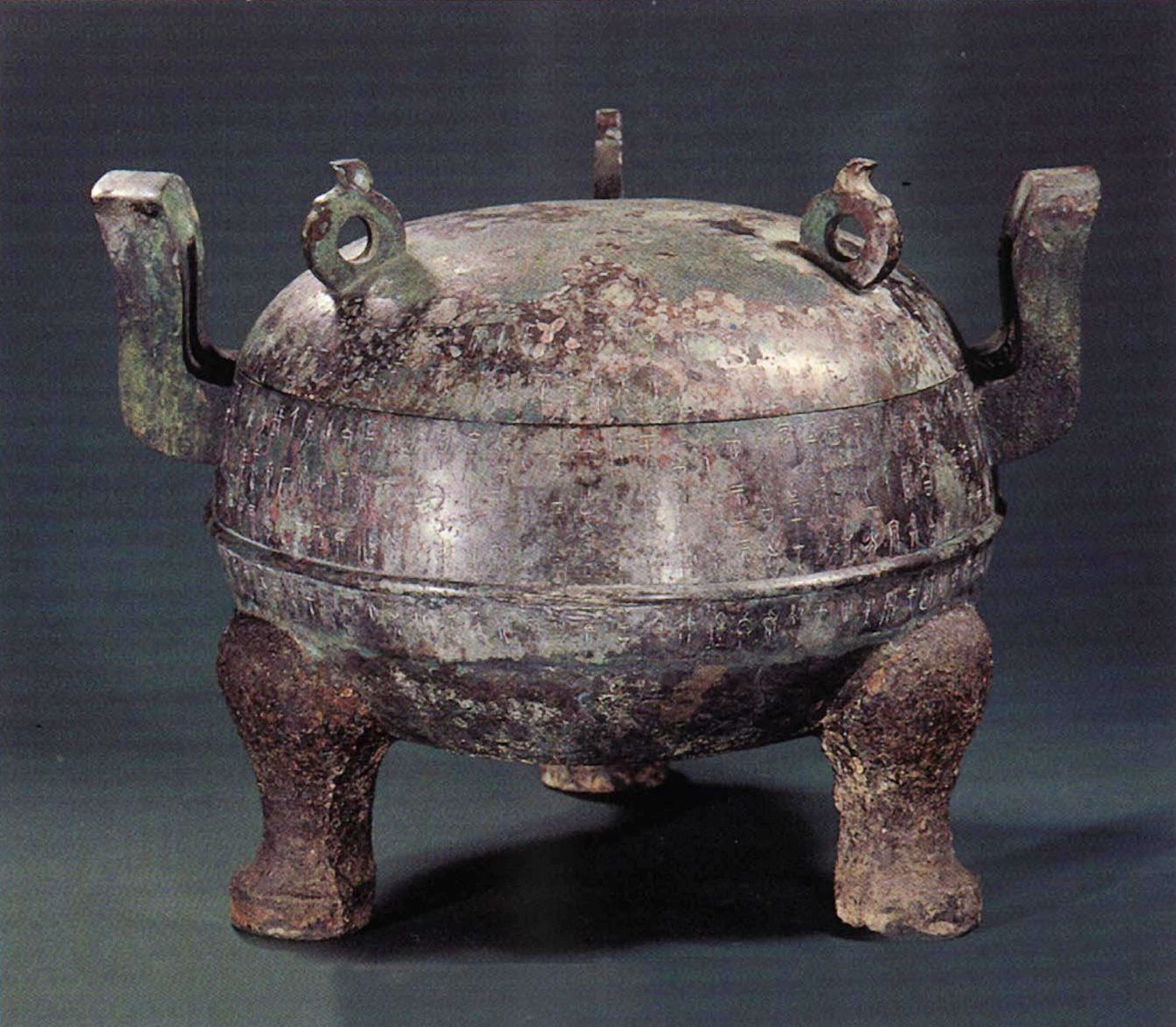
 Science and technology
Science and technology
 Review
Review
 Architecture
Architecture

 Geography
Geography
 Vacation and Travel
Vacation and Travel